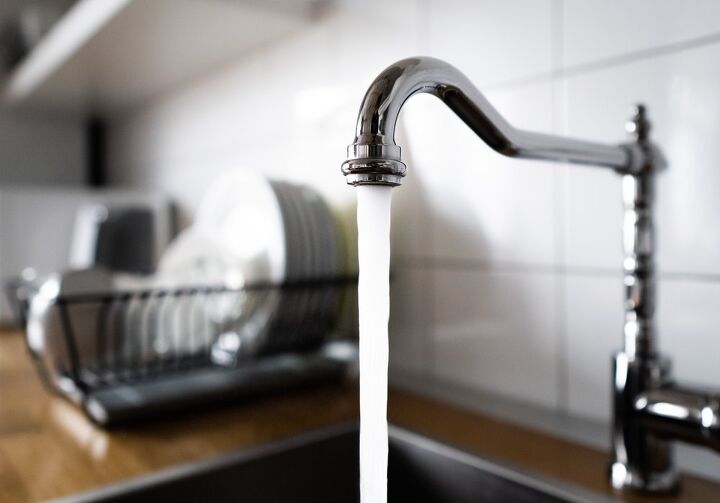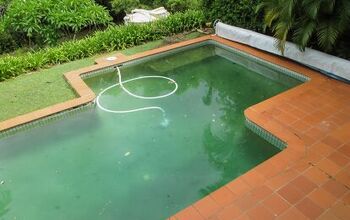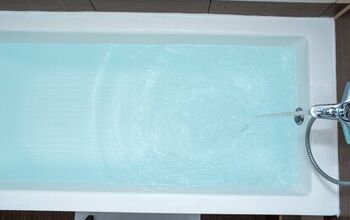Why Is My Sink Water Cloudy?

Cloudy sink water is an unnerving sight, especially if you drink from the tap or use it to wash your hands. It can be difficult to pinpoint the cause if you aren’t a certified plumber, but luckily, the problem isn’t severe despite the appearance. So, why is my sink water cloudy?
Sink water is often cloudy because you have hard water due to excess magnesium and calcium in the supply. A clogged aerator or rust and sediment in your pipes can also cause your sink water to appear cloudy. Install a water softener to make your sink water less cloudy and clean the aerator to remove clumps of sediment.
It is safe to drink cloudy water even if there is rust and minerals in it. However, hard water and rust can leave a film on your hands and dishes that can be disconcerting. Follow along as we explore why your sink water is cloudy and what you can do to fix the problem.
Cloudy Water
Cloudy water can make any homeowner uncomfortable, especially if you drink from the sink. Discolored sink water is rarely an emergency, but it can point to problems such as hard water. Let’s take a look at the main explanations as to why your sink water is cloudy.
Hard Water
Hard water is the most common cause of cloudy sink water. High mineral content is referred to as hard water and it is cloudy and discolored. The excess minerals can discolor the water and even affect how it tastes.
It is considered safe to drink hard water, but that doesn’t mean that you should. Hard water typically contains high levels of magnesium and calcium which can both eventually damage your pipes. Deposits of minerals can form inside the pipes restricting the flow of water and weakening them.
The drains can easily clog if you let hard water go for long enough without treating it. Hard water can leave behind a film on your dishes and even your skin when you wash your hands. There aren’t any major health concerns related to hard water, but it has the potential to cause hair loss.
Clogged Aerator
An aerator is a useful, albeit unnecessary component of a sink faucet. The screen in your faucet is referred to as the aerator, and it adds bubbles to the water as it leaves the faucet. Aerators can easily become clogged due to hard water, rust, and sediment that accumulates.
Pressure will build up in the faucet if the aerator is clogged, and that will make the water appear cloudy. The cloudiness often dissipates after a few moments if you fill a glass with water from the faucet. However, the water will remain cloudy if the aerator is clogged with particles and contaminants.
A plumber can help diagnose the problem and discern if the cause is within your pipes, or the aerator itself. Old aerators are likely to take on wear and tear as is, but a clogged aerator can often point to a larger problem.
Sediment
Sediment is harmful to your sink and plumbing whether you have an aerator or not. Pipes become brittle as rust forms, and clumps of rust eventually break away. The rust will continually move through your pipes and settle in different areas.
Water that moves through the pipes will become discolored as it passes through sediment. You will notice that it tastes bad and loses most of its clarity. Despite the off-putting appearance, it is safe to drink rusty sediment water.
However, rusted pipes and clumps of sediment will stay there or get worse until you treat the problem. Rust can eventually make your pipes so brittle that you will need to replace them altogether if left untreated.
How to Fix Cloudy Sink Water
Cloudy sink water isn’t a threat to your health in most cases, but it’s important to fix it if it makes you uncomfortable. Water with a high mineral content or rust sediment tastes bad and can stain your dishes. Luckily, there are several quick fixes, so let’s take a look at how to fix cloudy sink water
1. Water Softener
Install a water softener to filter out the mineral content in your water. This will improve the clarity of your cloudy sink water and can help protect your dishes and pipes. It costs an average of $1,900 to install a water softener, but it can cost as little as $1,200 or less.
Costs vary based on the system, labor rate, and the condition of your plumbing. You can choose between a traditional water softener or a tankless system. Tankless water softeners are more expensive, but they typically outperform standard water softeners.
The extra cost of a tankless water softener is worth it because it can last for 15 years or more, on average. Otherwise, you can install a traditional water softener without professional help for less than $900. The one downside to water softeners is that you put salt in them which can increase the sodium content in your water.
2. Clean the Aerator
A clogged aerator will make your sink water cloudy until you clean it. Luckily, you can clean a clogged sink aerator with household items such as white vinegar. Unscrew the aerator and soak it in a dish of white vinegar until you notice the sediment has dissolved.
Hold your aerator under running water to
Alternatively, you can remove your aerator altogether as it is unnecessary. It is easy to pop an aerator out of place and will likely your faucet water clear. The problem is likely due to sediment within the pipes or hard water if cleaning or removing the aerator doesn’t fix the problem.
3. Flush the Pipes
The best way to remove rust and sediment from your plumbing is to flush the pipes. This will make your sink water less cloudy and can help preserve your plumbing. It is easier to flush sediment from your pipes if you have 3-4 sinks and faucets in your home.
However, it is possible even if you open 1 or 2 cold water taps and leave them running. Run water through the open taps for 15-25 minutes to purge rust from the pipes. You can repeat this process as many times as you need until your sink water isn’t cloudy.
Why is My Sink Water White?
Sink water can become white if there is a buildup of air in your pipes. Too much air in your main water supply can also cause your sink water to appear white. You can tell that this is the problem if the water doesn’t stay white once you pour it into a glass.
Fill a glass with water from your sink and observe it for 1-2 minutes. The water should become clear within that time if the problem is simply due to excess air. This won’t affect the taste of the water and shouldn’t affect the appearance past a few minutes.
You have hard water or sediment in your pipes if the water doesn’t clear up in that time. Flush your pipes to remove excess air in your water line. Contact your water supplier if that doesn’t work because it may indicate that there is excess air in the main water supply in your area.
Summing It Up
The main causes for cloudy sink water are hard water and a clogged aerator. Install a water softener to remove calcium and magnesium from your water so that it isn’t discolored. Remove your faucet’s aerator and clean it with white vinegar to remove the clog.
Replace the aerator if you cannot unclog it, or remove it because sinks work just as well without one. Sediment in your pipes can also explain why your sink water is cloudy. Open as many cold water taps as you can in your home and run the water for up to 25 minutes to flush the sediment.
Excess air in your plumbing and water supply can cause the water to appear white when it comes out of your sink. This is only a problem if the water doesn’t become clear after 1-2 minutes. Otherwise, it may point to a larger problem such as hard water or sediment in the pipes.
Related Guides

Nick Durante is a professional writer with a primary focus on home improvement. When he is not writing about home improvement or taking on projects around the house, he likes to read and create art. He is always looking towards the newest trends in home improvement.
More by Nick Durante



























